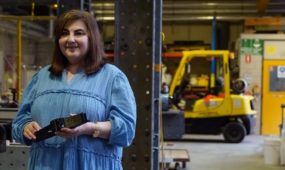Innovation converts ordinary clay into chemical trap
Innovation
A NEW product has been developed that captures dangerous PFC left behind by firefighting extinguishers.

Sign up to receive notifications about new stories in this category.
Thank you for subscribing to story notifications.
Scientists from South Australia have converted ground clay into an efficient and cost-effective trap for environmental contaminants left behind when fire retardant ‘film forming’ foams are used to extinguish flames during training or emergencies.
Known as matCARE™, the product has already been used to remove potential cancer-causing perfluorochemicals, or PFCs, from one million litres of contaminated water at multiple defence locations across Australia.
Professor Ravi Naidu, who developed matCARE™ with colleagues at the CRC for Contamination Assessment and Remediation of the Environment (CRC CARE) and the University of South Australia, says the product is founded on the filtering properties of soil.
“In essence, matCARE™ is ‘green’ in that it is derived from naturally-occurring soils,” said Professor Naidu.
“We are the only group in the world working on this angle for cleaning up PFCs,” he said. “We knew that soils offered properties as filter mediums, so we looked at ways to enhance their capacity to capture PFCs.”
The matCARE™ product consists of mineral-modified clay formed into small pellets, which trap PFCs when contaminated water is forced through under pressure using a mobile remediation plant.
Clear evidence of the efficacy and cost effectiveness of matCARE™ has been provided through CRC CARE trialing the innovation at Royal Australian Air Force sites in Edinburgh (South Australia), Pearce (Western Australia) and Townsville (Queensland), where ‘film-forming’ foam use – mainly in firefighter training – had caused substantial PFC contamination.
“We have successfully treated one million litres of water so far,” said Professor Naidu.
Our product offers about a 90% saving compared to storage.
“To achieve this, we’ve only had to use about 100kg of our matCARE™ material. So it’s very efficient,” he said.
The product offers significant cost and safety benefits.
“At the moment water that is contaminated with PFCs is stored in tanks, or in damns,” said Professor Naidu. “It’s expensive, and in some cases leakage results in contamination of ground water.”
Professor Naidu estimates that treating contaminated water with matCARE™ costs between 20 to 45 cents per litre.
“Our product offers about a 90% saving compared to storage,” he said. “It may also convert contaminated land back into usable space.”
Professor Naidu says there is a large global market for his product.
“Australia has 450 civilian and military airports, and nearly all of these have used firefighting foams in training or in real emergencies and are therefore contaminated sites. We are currently working with Airservices Australia to determine the feasibility of treating contaminated wastewater at airports.”
Environmental PFCs have been shown to accumulate in animal and human tissue, and are linked to bladder and liver cancer, endocrine disruption, and developmental and reproductive toxicity.
Stuart Khan, Associate Professor at the UNSW School of Civil and Environmental Engineering, says the dangerous PFCs will linger even after the 'film-forming' foams is phased out.
“Although application of these products to fight fires is now being phased out, there is still stock around that can be used, and broad prior use has a long impact due to the very slow breakdown rate of PFCs, and accumulation in living tissues,” he said.
“To assess the overall usefulness of matCARE, I’d be interested in seeing a life-cycle assessment of the production process – what sort of consumables, chemicals and energy input go into it – and what the final products of the treatment process are, including what the impacts on the environment and health might be,” he said.
The matCARE™ product has been announced as a finalist in the 2014 The Australian Innovation Challenge.
Jump to next article



